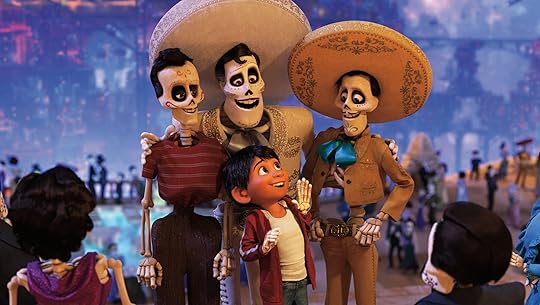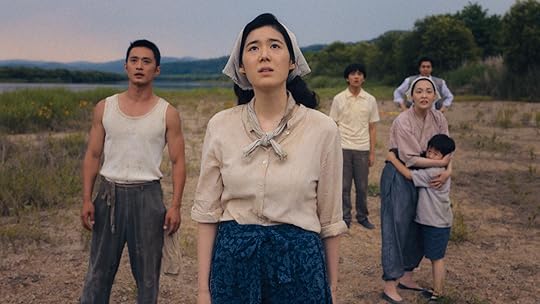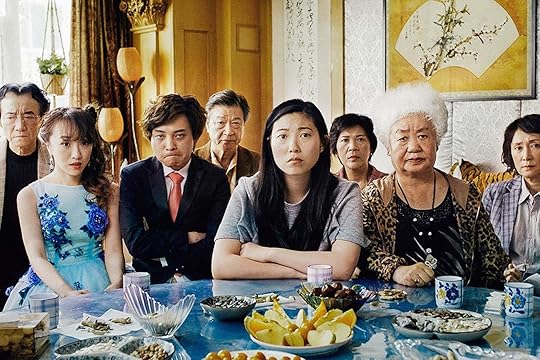Telling Diverse Stories With Empathy.
Let me share a little secret about my novel, “Full Circle”. It didn’t start out as a story about Prague or the Russian invasion. Nope. My original idea was a tale about race and the bonds of friendship.
The big question behind it all? “Can Black and white people be true friends without race getting in the way?”
The book was going to bounce between Birmingham, Alabama, in 2014, and Prague in 1968. In both places, one character would be on the receiving end of racism. Not the in-your-face kind, but the quiet, paper-cut kind. The kind that stings more because it’s subtle, daily, and often brushed aside. I even toyed with calling it Small Cuts. Clever, right?
Then came my beta readers. Wonderful, honest humans who gently pointed out: “This isn’t your story to tell.” And they were right. While I could research and empathise all day long, I couldn’t authentically capture the lived experience of a Black American facing systemic racism. So I zoomed in on the story I could tell truthfully, the one in Prague, centred on a Jewish student during the Russian invasion. That story became “Full Circle”, and the entire journey raised a burning question:
How do we respectfully write stories set in cultures that aren’t our own?Grab your metaphorical passport, friends, because we’re going on a journey through the wonderful, messy terrain of cross-cultural storytelling.
Culture Is a Mosaic, Not a Monolith. Here’s the thing: Writers are curious creatures. We’re drawn to the unfamiliar, the unknown, the stories that live beyond our picket fences. Writing across cultures is one of the most powerful tools we have to build empathy. But let’s be real…it’s also a minefield. One wrong step and boom: you’ve exoticised, stereotyped, or flat-out offended.
In today’s hyper-aware world, audiences are paying attention. And that’s a good thing. It means we’re being held to higher standards. No more “Well, I meant well…” as a free pass.
So, how do we do it right? What does respectful representation actually look like?
7 Steps to Writing Diverse Stories Well.

Step One: Remember Why Representation Matters
(And No, It’s Not About Diversity Bingo).
Representation isn’t just about variety. It’s about validity. Seeing your story, or something close to it, in a book or on screen sends the message: “You exist. You matter.”
But when all we see are stereotypes: the wise old Asian, the spicy Latina, the Arab terrorist, the greedy Jew, it tells a different story: “You’re a type, not a person.”
Take Americanah by Chimamanda Ngozi Adichie. Through the eyes of Nigerian protagonist Ifemelu, we explore identity, race, and immigration in both Nigeria and America. It’s a story rich in specificity, but that’s what makes it universal. You don’t need to be Nigerian to relate to feeling like an outsider or questioning who you are in a new place.
By the way, check her TED talk about The danger of a single story… absolutely brilliant.
In a nutshell, great representation deepens the world for everyone.
 Step Two: Research Like You Mean It.
Step Two: Research Like You Mean It.
Can you write about a culture that isn’t yours? Yes.
Should you? That depends. But if you decide to take the plunge, do your homework.
Lazy writing is where the wheels come off. Google alone won’t cut it. You need to read books, watch documentaries, talk to people, and spend time in that culture’s spaces if possible. Better yet, work with cultural consultants.
Consider Crazy Rich Asians by Kevin Kwan. It’s dripping with details: food, family dynamics, Singlish expressions that make the Singaporean-Chinese world come alive. Why? Because Kwan knows that world inside and out. Authenticity is in the texture.
Now contrast that with The Great Wall, a fantasy flick featuring Matt Damon as the hero who saves ancient China. Beautiful visuals, but culturally tone-deaf. It transformed a sweeping legend into another “white saviour” saga. Big yikes.
Moral of the story? If you’re going to step into someone else’s cultural shoes, don’t just try them on for a scene. Live in them for a while.

Step Three: Stereotypes Are Easy. Nuance Takes Guts.
We all have mental shortcuts about cultures, some harmless, many not. The key to writing across cultures is pushing past the stereotypes.
Take Everything I Never Told You by Celeste Ng. It tells the story of a mixed-race Chinese-American family in 1970s Ohio.
Ng doesn’t hammer you over the head with race talk. Instead, it weaves into the characters’ daily lives: the father’s discomfort with his identity, the mother’s broken dreams, the kids’ struggle to fit in. It’s a story first, race included, not a story about race.
Now, remember Sixteen Candles? The infamous Long Duk Dong character? A cringey caricature complete with gongs and broken English. It didn’t age well because it was never respectful to begin with.
Good writing resists flattening people. It goes deeper.

Step Four: Ask Yourself, “Whose Story Is This, Really?” .
Here’s the spicy bit: Just because you can write a story doesn’t mean you should.
Jeanine Cummins’ American Dirt attempted
to tell a powerful migrant story about a Mexican woman fleeing cartel violence.
The problem? Many Latinx readers found the book riddled with stereotypes, factual errors, and a tone that felt more like trauma tourism than empathy.
Compare that with Moonlight, directed by Barry Jenkins. While it isn’t cross-cultural in the traditional sense, it’s a perfect example of a filmmaker telling a story from within his community. The result? A nuanced, quiet masterpiece that resonates far beyond the Black queer experience it portrays.
So ask yourself: Why am I telling this story? Do I bring lived experience, deep knowledge, or genuine curiosity? Or am I just chasing a trend?

Step Five: Collaborate, Don’t Colonise.
You don’t have to do it alone. In fact, you shouldn’t.
Look at Pixar’s Coco. While the creators weren’t Mexican, they collaborated with cultural advisors, travelled through Mexico, talked to families, and listened.
The result? A film that Mexican and Latinx audiences overwhelmingly embraced.
Compare that to Disney’s Pocahontas.
Pretty visuals, but riddled with historical inaccuracies and romanticised colonisation. The difference? Coco collaborated. Pocahontas assumed.
Invite people into your process, not as checkboxes, but as co-creators. Authenticity is a team sport.
 Step Six: Sweat the Small Stuff.
Step Six: Sweat the Small Stuff.
Names, slang, gestures, meals, clothing, these aren’t just decorative. They’re loaded with meaning.
In Pachinko by Min Jin Lee, the details are stunning. Korean names, honorifics, historical tensions, family customs, they’re all woven in with care. Lee spent years researching. It shows.
On the flip side, we’ve all seen movies where characters wear the wrong traditional outfit or say something so off that it pulls you right out of the story. (Looking at you, Hollywood wardrobe departments that confuse cheongsam with hanbok.)
If your Indian character eats beef or your Nigerian one casually says “cheerio,” it’s not quirky. It’s sloppy.
Details either build your world or unravel it. Choose wisely.

Step Seven: Support Own Voices.
Here’s some good news: the tide is turning. The publishing and film industries are finally giving more space to Own Voices storytellers, those telling stories from within their communities.
Books like Angie Thomas’ The Hate U Give or Ocean Vuong’s On Earth We’re Briefly Gorgeous couldn’t have been written from the outside. They ring with emotional truth.
Lulu Wang’s The Farewell is another gem. Based on her own family experience, it tells the story of a Chinese-American woman grappling with cultural clashes and a family secret. It’s funny, poignant, and feels utterly lived-in.
Writing across cultures isn’t off-limits. But it also isn’t a free-for-all. Sometimes, the most respectful thing you can do is amplify someone else’s voice instead of speaking over it.
So, What’s the Bottom Line?Writing across cultures isn’t about walking on eggshells. It’s about writing with care. About asking: “What do I owe the people I’m writing about?”
The answer? Curiosity. Humility. Honesty. And above all, respect.
When you get it right, your story doesn’t just work; it resonates. Because the best stories don’t divide us by what makes us different, they connect us through what makes us human.
So go ahead, explore the world with your pen. Just bring your empathy, your map, and maybe a trusted travel guide or two.
And remember: if you’re going to write in someone else’s house, at least take your shoes off at the door.
Now it’s YOUR turn – What story got cross-cultural representation just right for you?
Would love to get your input in the comment box below.
The post Telling Diverse Stories With Empathy. appeared first on Vered Neta.



